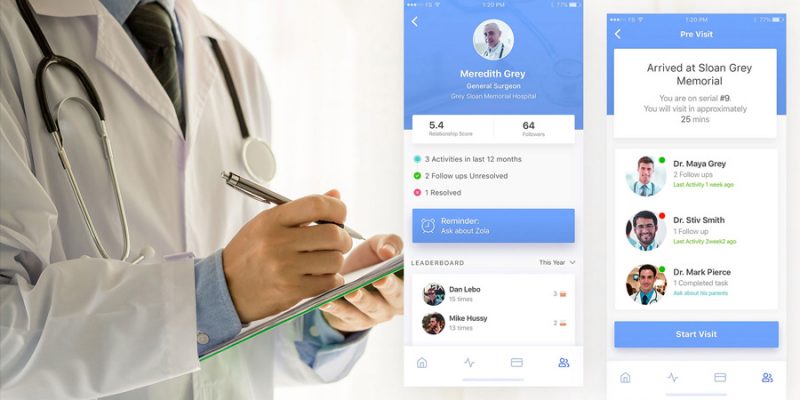
Python is a widely-used programming language in a range of disciplines
Even before the epidemic, the healthcare industry had a significant role in society. The technology industry has traditionally collaborated with the healthcare industry to better people’s lives. Many people relate this to big themes like artificial intelligence and machine learning, yet they are unaware that something as simple as a programming language has played a role. Python is the programming language that made this feasible. Some may be perplexed by this remark; how can a programming language help to the cause on its own?
So here let’s see the importance of Python in healthcare:
Healthcare apps
The most important element that healthcare organizations must deliver to everyone is 24-hour availability. This functionality is simple to implement using online or offline mobile and web applications. The Python programming language may assist developers in creating simplified and user-friendly healthcare applications that allow users to contact specialists or track their health and fitness at any time and from any location.
Predictive models
Python additionally strengthens and improves the skills by combining them with other technical breakthroughs to get better outcomes. Machine learning is one example of such a collaboration. For example, using machine learning and deep learning, python provides prediction models that clinicians may use to track and forecast the severity of an illness in a patient. The patient will be able to obtain effective therapy for the ailment before it becomes life-threatening.
Management with data science
Even in the absence of severe pandemics, hospitals are frequently overburdened with patients. As a result, manually managing all of the patients and assigning them to available doctors becomes increasingly burdensome. Python, a high-level programming language, may help hospitals save effort by combining Python with data science to manage patients, physicians and nurses. Python also provides high-level security, ensuring that all data is kept safe and secure.
Image analysis
Body scans are an important aspect of the medical industry. MRI, X-ray, and ECG scans and pictures show the doctor what the naked eye cannot see and aid in the diagnosis of the patient. Doctors may use Python, coupled with artificial intelligence and machine learning, to scan these photos and diagnose patients with more precision.
Faster protection from disease
Medicines are the only items that can help you cure or avoid a disease. However, the process of producing a drug is extensive. Traditional approaches include a trial-and-error procedure of combining several compounds to identify the best effective and safe treatment for every illness. Python and other programming languages may turn this time-consuming procedure into a digital one. Python, for example, may do several iterations on various substances using a computerized method, allowing scientists to swiftly produce an effective treatment.
Versatility and flexibility
Python aids in the development of a wide range of online and offline apps for several uses. Although this is nothing new because numerous apps perform the same thing, it is highly regarded in the healthcare industry due to its versatility. This industry, probably more than any other, requires intuitive apps that cater to a wide range of demands. Emergencies may happen at any moment and in any scenario, and if an application is designed difficultly, it might lead to a variety of undesirable outcomes.
Information security
When it comes to data relating to healthcare, security is crucial. When building solutions in this industry, information security is frequently a key consideration. Python, on the other hand, is beneficial once again since its frameworks allow for safe data interchange, and its requirement to integrate data for a better experience is verified by HIPAA compliance. As a result, there would be no infractions.
Analysis
In every case, analyzing numerous reports is critical for making an informed choice on how to proceed. The relevance of this one is heightened in the healthcare industry. Python is recognized to be one of the finest languages for this, which is why data scientists use it for analyzing large data sets. As a result, the language is also useful in this situation. NumPy and SciPy are two of the most popular Python libraries for this purpose.
Securing innovation
Machine learning has the potential to disrupt numerous sectors, so it’s only natural that it would be used in healthcare. The profession is rapidly turning to machine learning (ML) to save billions of dollars and provide better treatment. They’re mostly doing it with Python, an open-source language that many believe to be the finest for machine learning projects. Consider how to utilize, monitor, and protect the language code or apply open-source language automation to optimize Python for ML in Healthcare. This will help firms manage risk and expedite the innovation Python can provide.
Patient care and hospital management
Hospitals and clinics are entirely reliant on resources. As a result, clinical institutions with limited personnel will rely on healthcare applications to perform functions such as patient data management, appointment scheduling and consultations. Python-based healthcare applications are more secure, user-friendly, and scalable. Physicians must detect patients who do not follow their treatment plans. The management of critical patients necessitates the use of experienced personnel. The Python-based ML model provides a safe foundation for these procedures.



















